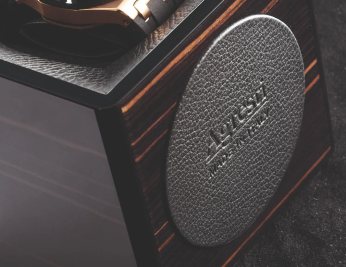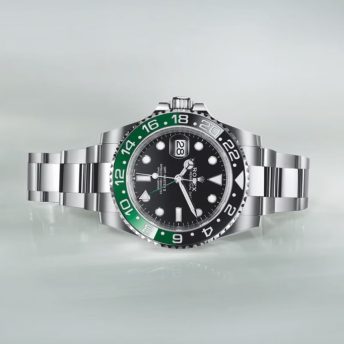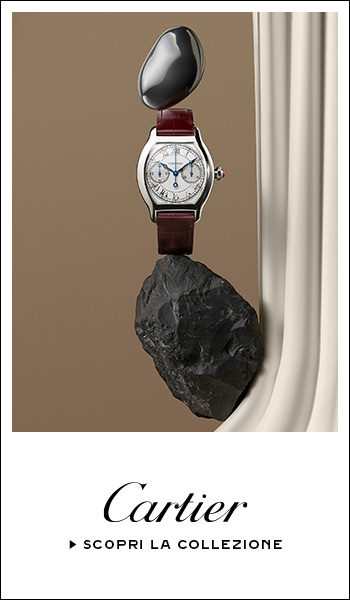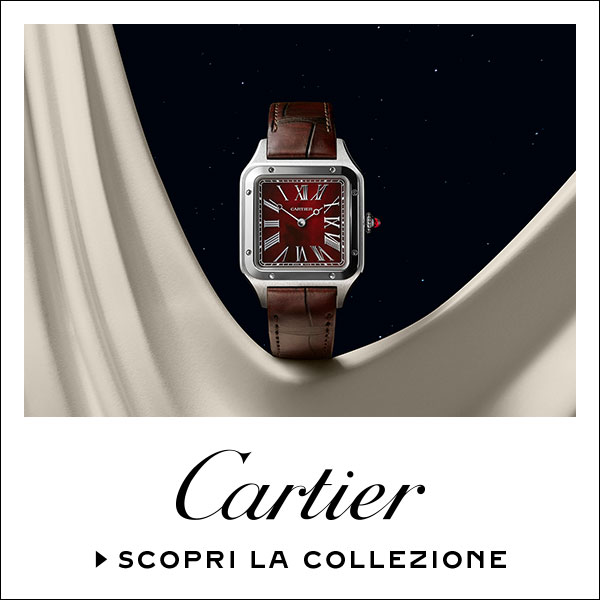Today, dear friends of IWS, about Blancpain. Of course, with nearly 300 years of history not even a book would suffice, but we will try to tell you about the most important steps in the company’s history and some of the key moments that marked it.
Blancpain stands out as the oldest watchmaker in the world still in business. This fine house has adroitly navigated its way through nearly three centuries, leaving an indelible imprint on the world of luxury watchmaking.
The Blancpain Dinasty
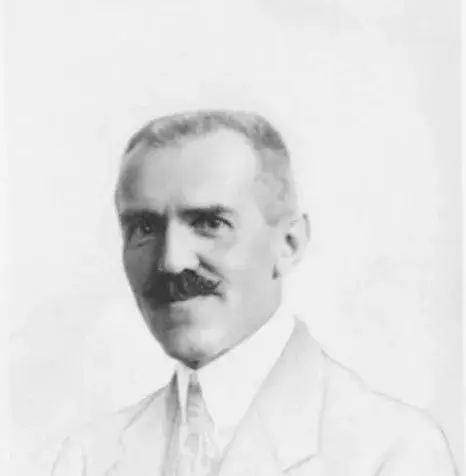
Blancpain was founded in 1735 by Jehan-Jacques Blancpain in the picturesque village of Villeret, Switzerland. Following the founding, for nearly 80 years, Jehan-Jacques was in charge of the company he founded until his grandson Frédéric-Louis also took over. He is credited with a revival in escapement design and the design of Blancpain’s first ultra-flat watches. Almost 100 years after the founding, the fourth generation makes its entrance. Frédéric-Emile Blancpain, son of Louis, changed the company’s name by naming it after himself and began construction of the largest manufacture in Villeret. From here on, the company will be led for another 100 years by the Blancpain family, until 1932.
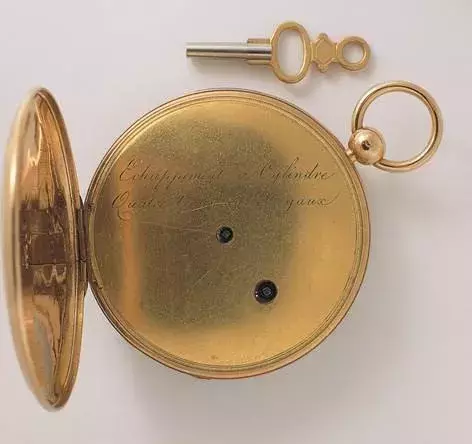
Fiechter, SSIH, Piguet and Swatch Group
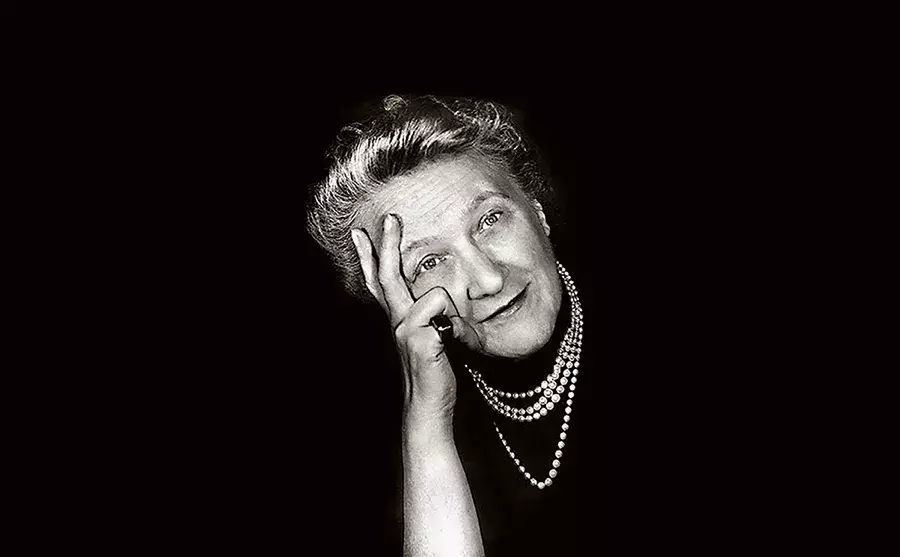
In 1932, Frédéric-Emile’s daughter, Frédéric-Emile, hands over the company to his longtime assistant Betty Fiechter, who thus becomes the watch industry’s first female CEO. The Fiechter family, in compliance with the laws in force at the time, is obliged to change the name of the company, as there are no longer any descendants of the Blancpain family within it. Thus Rayville SA was born, which would remain headed by Betty Fiechter’s grandson, Jean-Jacque until 1961. Yes, the same Jean-Jaques who is partly credited with the creation of the Fifty Fathoms.

In 1961 the company was sold to SSIH, a watch industry conglomerate of which Tissot and Omega were also members. It was during this period, just before the onset of the quartz crisis, that the company reached its all-time peak in units produced: about 220,000 watches.
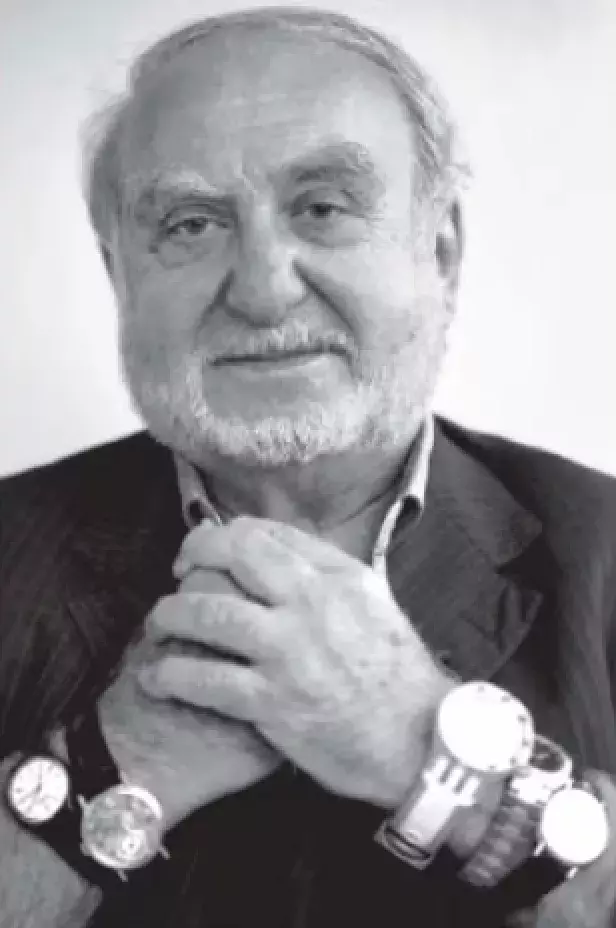
21 years later, in 1982, the company underwent another change of hands due to the pressure that the quartz crisis had brought on the industry. Buying it is Jacque Piguet heir and owner of the watch company founded by Louis-Elysée Piguet, associated with the Fréderic Piguet SA movement factory. Jacque hires as CEO, Jean-Claude Biver who has pledged to revive the brand in total contrast to the industry’s trend.
If in those years quartz had upset the mold by lowering production costs and the perceived value of the watch as such, Biver set out to position Blancpain as a luxury brand dedicated to handcrafted movements, excellent finishing, and unparalleled mechanics. These efforts culminated in the creation of the 1735 Grande Complication, the most complicated watch ever created up to that time.

In 1992 Jacque Piguet agreed to sell Blancpain to SMH, a company formed by the merger of SSIH and ASUAG, which finally became The Swatch Group in 1998. The management of Blancpain remains under Jean-Claude Biver for another 10 years, until it passes to Marc A. Hayek in 2002.
The Most Important Moments in Blancpain’s History.
The Collaboration with John Horwood
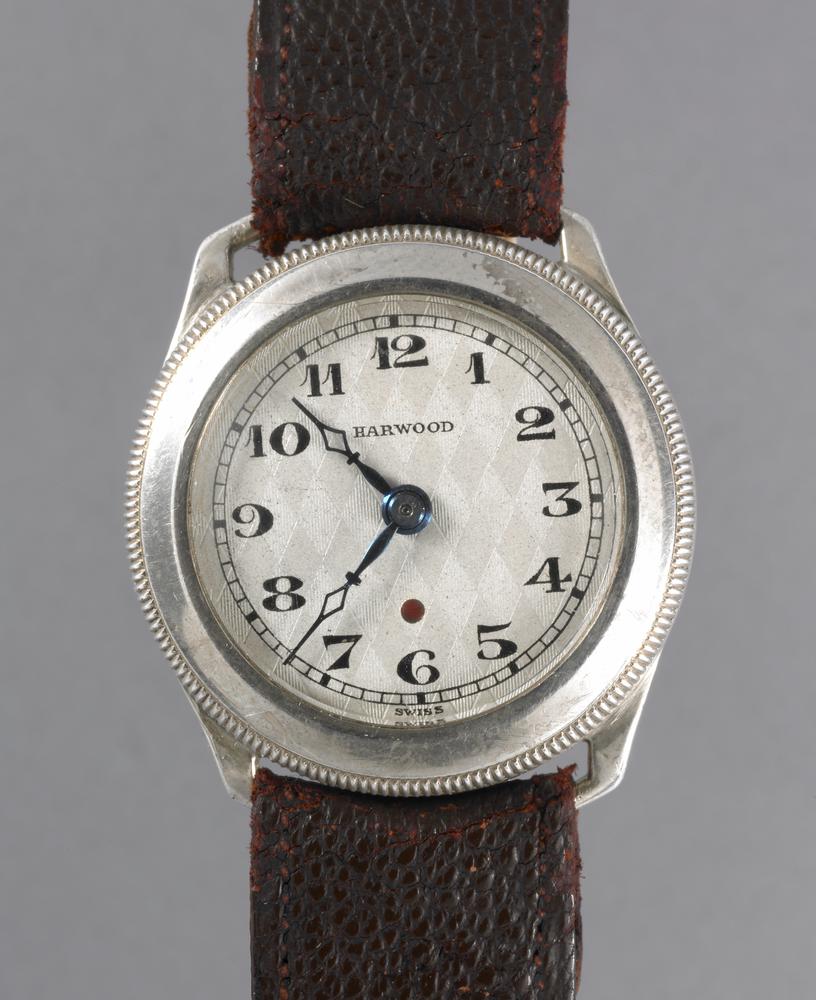
In 1926, under the leadership of the Blancpain family, the company collaborated with John Harwood, the British inventor who designed and patented the world’s first automatic wristwatch movement. The result of the collaboration was a series of Blancpain watches called self-winding Rolls, based on Harwood’s patent. These were rectangular-shaped watches with a protective dial drawer.
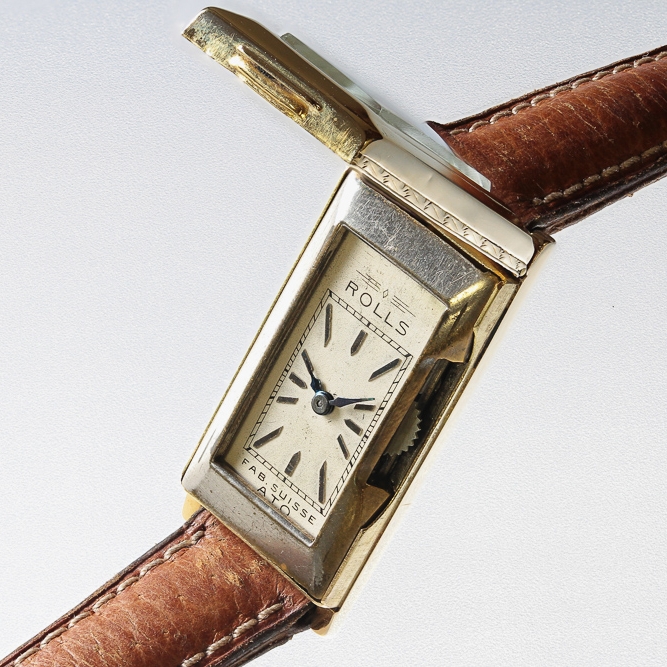
The Pioneering Diver: Fifty Fathoms Collection
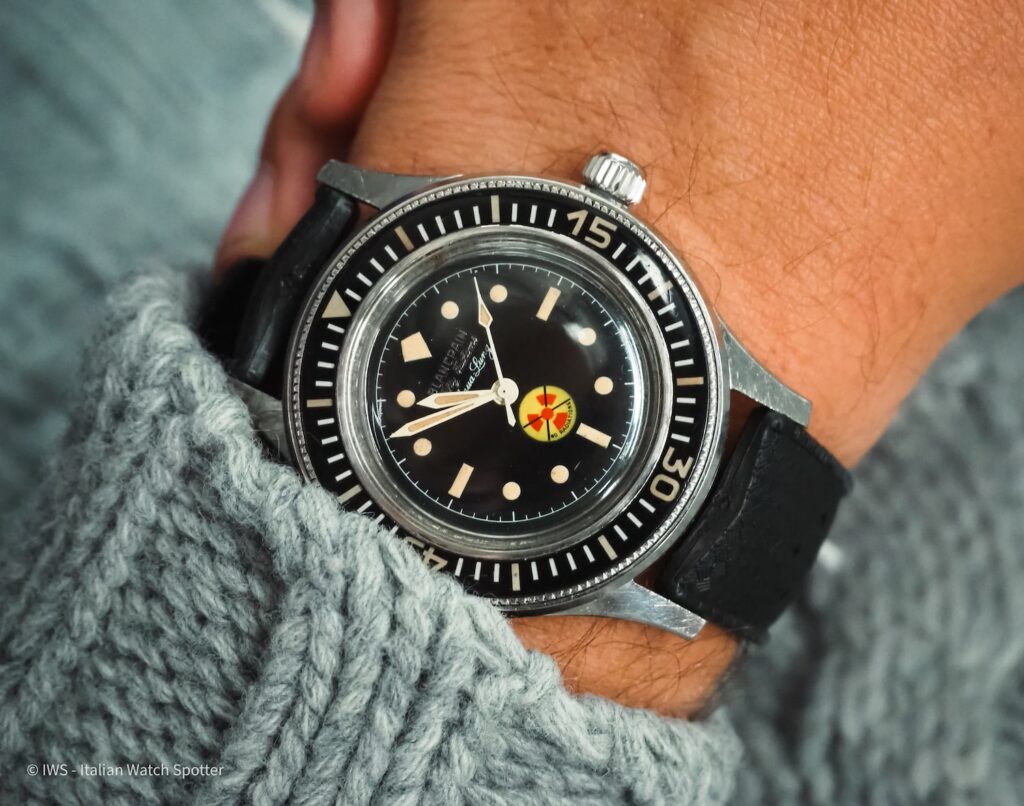
Created in 1953, the Blancpain Fifty Fathoms was one of the first dive watches made and set standards that became the norm in the diving watch industry. Created in collaboration with two French naval officers, this extraordinary piece was the first diver’s watch to feature a unidirectional rotating bezel, a crucial element in ensuring safety while diving. The creation was also promoted by Jean-Jacque Fiechter, a diving enthusiast. The Fifty Fathoms has always been associated with diving missions, ocean exploration, and even military operations.
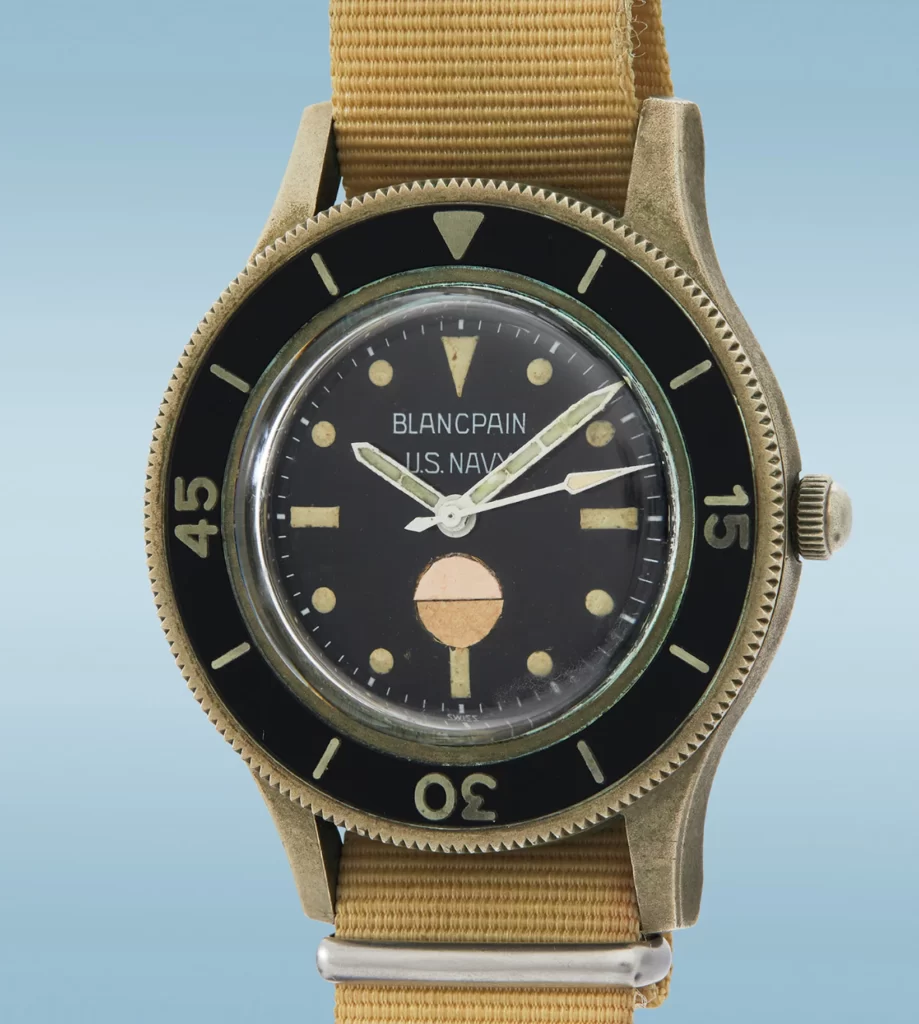
Over the years, Blancpain has continued to develop and refine the design of the Fifty Fathoms, keeping it in step with the times without losing its essence and pioneering spirit. The watch has become an icon in diving culture and watchmaking, managing to combine functionality, elegance and mechanical complexity. Throughout its history it has been awarded to the world’s most important navies including the U.S. Navy. In particular, due to the strict policy of the U.S. military that prohibited sourcing non-U.S. products, Blancpain-then Rayville SA-had to partner with the American importer Tornek. This led to the establishment of Tornek-Rayville, hence the name of some of Blancpain’s rarest Fifty Fathoms.
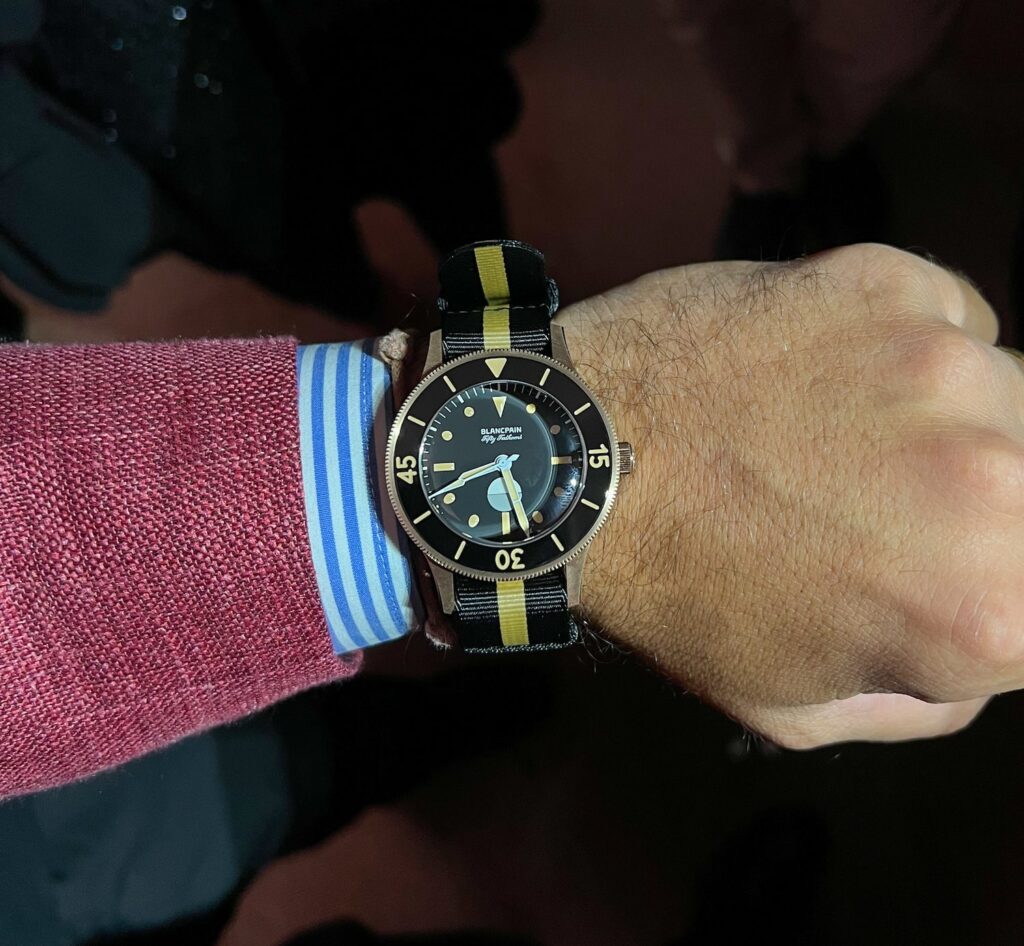
Blancpain recently decided to focus heavily on the Fifty Fathoms collection. This year in particular marks the 70th Anniversary since the creation of the model, and to mark the occasion, the company has launched no less than three new celebratory variants. The latest one is just reminiscent of the famous Mil-spec, thanks to the permeability indicator placed on the dial.
The Six Masterpieces
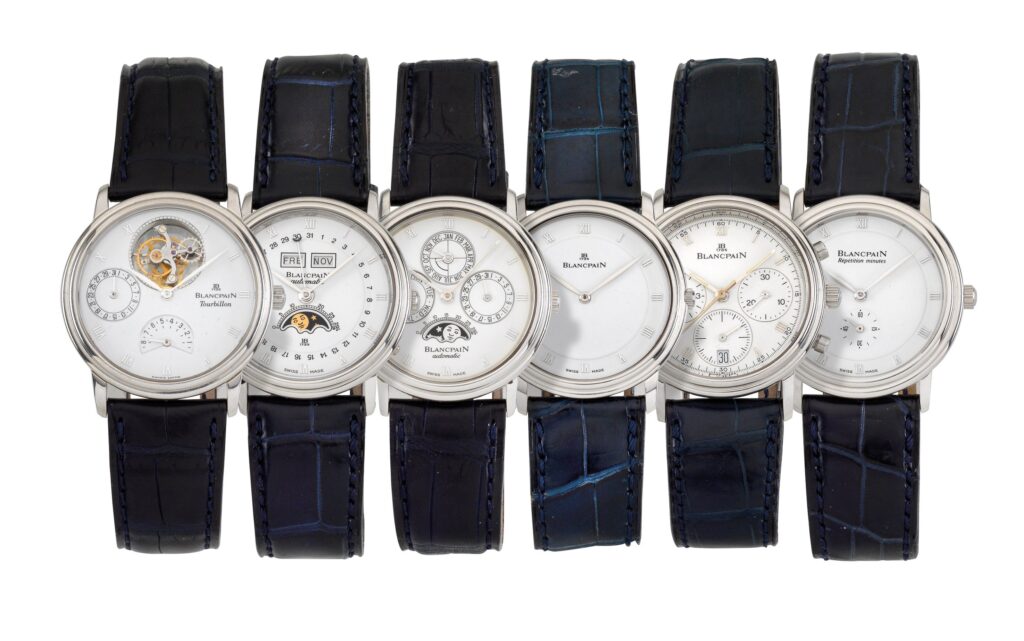
In the 1980s, at the height of the quartz crisis, Jean-Claude Biver and Jacques Piguet set out to demonstrate all the savoir-faire and prestige of Swiss haute horlogerie. Thus was born Blancpain’s “The 6 Masterpieces” collection. The two set out to showcase the avant-garde of haute horlogerie by making six watches, each equipped with extremely complex functions or cutting-edge movements.
From this effort came, in chronological order: a complete calendar with moon phases, an ultra-flat, a perpetual calendar, a minute repeater complication, a split-seconds chronograph and a tourbillon watch. For an in-depth look at this topic, I invite you to read this very interesting article by Watch Brothers London.
The Art of Complexity: The Introduction of Caliber 1735
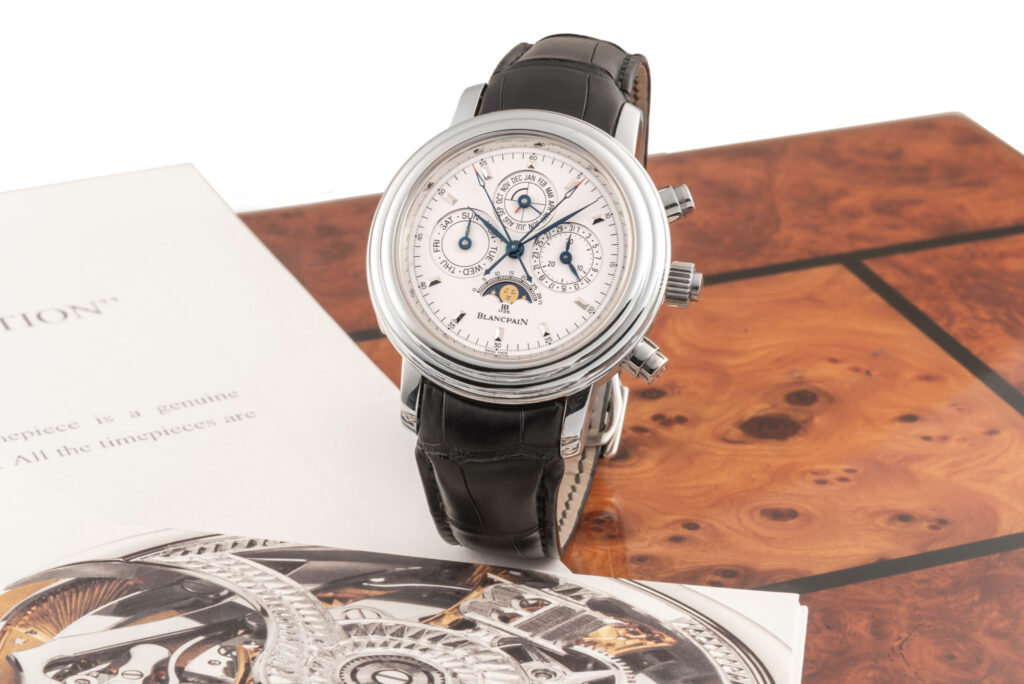
Without a shadow of a doubt, one of Blancpain’s most remarkable contributions to the world of watchmaking is the legendary Caliber 1735. Introduced under Biver’s leadership in 1991, this hand-wound movement is one of the most complex horological complications ever made and the most complex up to that time. Composed of no less than 740 carefully assembled components, the 1735 is an engineering marvel that integrates a perpetual calendar, tourbillon, split-seconds chronograph, moon phase, and minute repeater.
Caliber 1735 is not only a demonstration of technical skill, but also a tribute to craftsmanship and precision. Its complexity and meticulous workmanship make it one of the most difficult movements to produce, so much so that it is assembled only by highly skilled master watchmakers. Each 1735 caliber takes an entire year to assemble and perfect, which also explains the high price and exclusivity of the watch that houses it.
Widely recognized as one of the masterpieces of modern watchmaking, Caliber 1735 establishes Blancpain’s role as one of the world’s most innovative and technically advanced watchmakers. This movement represents a landmark in the world of haute horlogerie, and remains one of the most celebrated creations in Blancpain’s history.
The Ocean Commitment Project
Not only a respected name in the watch industry, Blancpain is also recognized for its commitment to ocean conservation through its “Blancpain Ocean Commitment” project. Part of the proceeds from sales of the Fifty Fathoms collection goes to support this noble cause.
Final thoughts
From 1735 to the present, Blancpain’s history is an incredible journey through time and technology, always with one eye on tradition and one on modernity. From a small workshop in a remote Swiss village to a global brand, Blancpain has managed to maintain its original DNA, offering watches that are a tribute to time and human craftsmanship, over the course of nearly three hundred years of history.
Follow us on Instagram not to miss any real-time update.
Visit our Youtube channel to live the world of watchmaking firsthand.

